Router.so
Open source lead router and form backend for developers

Router.so is a form backend service that helps developers manage form submissions and lead routing. With over 1,000 signups, this open-source platform provides developers with tools for custom schema creation, error tracking, and lead management. While the platform had gained initial traction, there was a need to better understand user needs and improve the product's messaging and positioning in the market. This research project focused on analyzing user behavior, identifying pain points, and developing clear recommendations to increase user adoption and conversion rates.

Despite having a strong technical foundation and growing user base, Router.so faced challenges in clearly communicating its value proposition to potential users. This research aimed to uncover why users weren't converting from free to paid plans and how clearer messaging could help bridge this gap. The goal was to identify specific areas where improved communication and user experience could drive higher engagement and conversions.

The research was structured around three key areas: messaging and positioning, usage patterns, and pain points. We needed to understand what users valued most about Router and how they described it to others, which would inform our messaging strategy. By examining usage patterns, we could identify common use cases and how developers were integrating Router into their workflows. Finally, we investigated where users encountered challenges and what improvements they would prioritize, helping us create a roadmap for enhancing the user experience. These questions were designed to provide a comprehensive view of both the user's journey and the platform's market position.
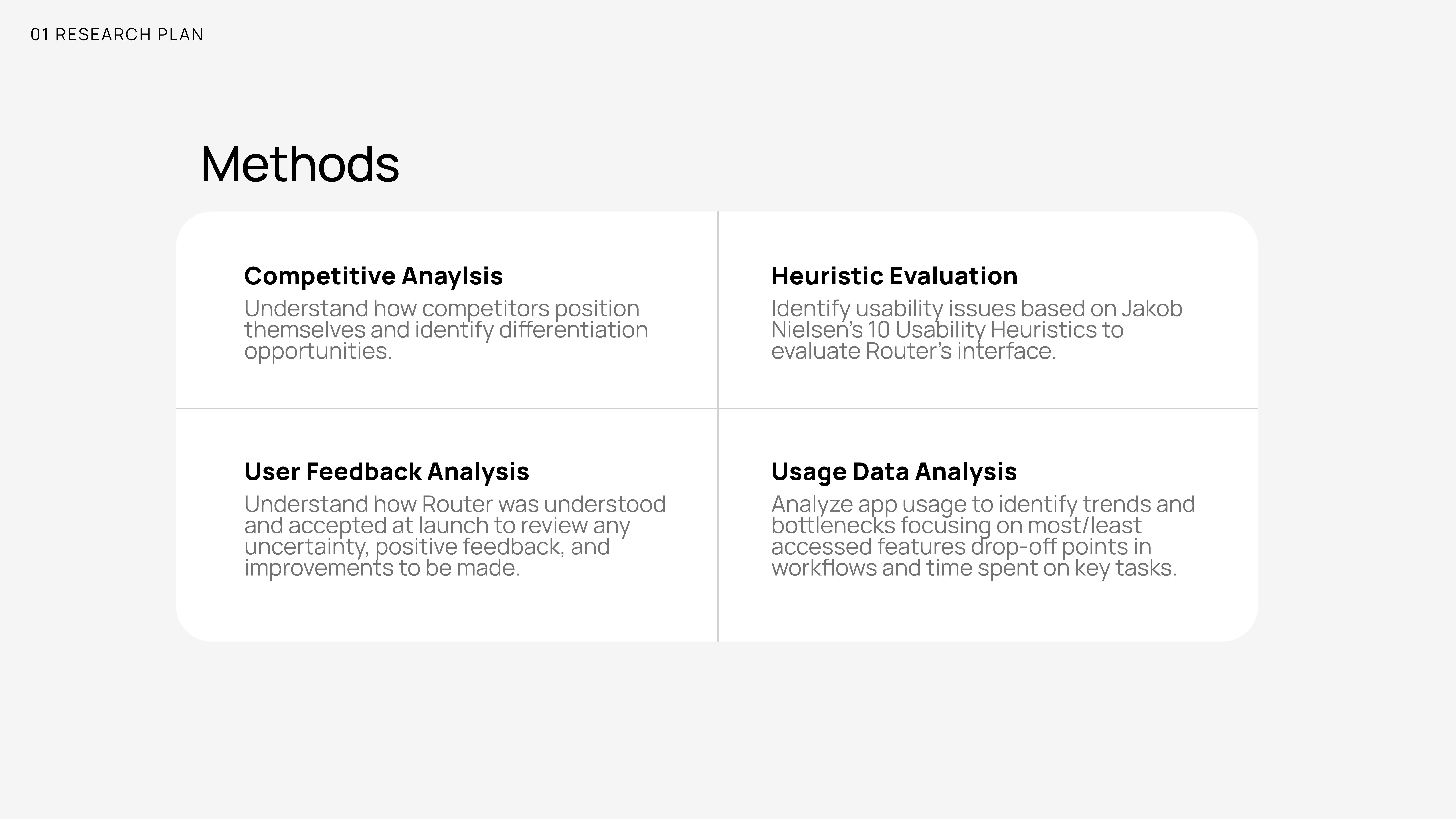
To gain comprehensive insights within the constraints of an early-stage startup, we employed four complementary research methods. A competitive analysis examined how Router positioned itself against other form management solutions in the market. A heuristic evaluation, based on Nielsen's 10 Usability Principles, helped identify interface issues and opportunities. Analysis of user feedback from product launch provided valuable insights into initial perceptions and areas for improvement. Finally, usage data analysis through PostHog revealed actual user behavior patterns. While limited resources and a small user base restricted our ability to conduct direct user interviews or extensive surveys, these methods together provided both qualitative and quantitative data to inform our recommendations.



The user flow analysis revealed critical insights into how developers interact with Router. By mapping the journey from initial login through endpoint creation to lead management, we identified key friction points in the user experience. The most significant challenges emerged during endpoint creation, where users struggled with field type configurations, and in mobile scenarios, where formatting issues impacted lead monitoring. Success rates varied notably across different stages, with initial login showing 95% success but dropping to 75% during endpoint creation. This analysis highlighted where users needed additional guidance and where technical terminology could be simplified, directly informing our recommendations for improving the onboarding experience.
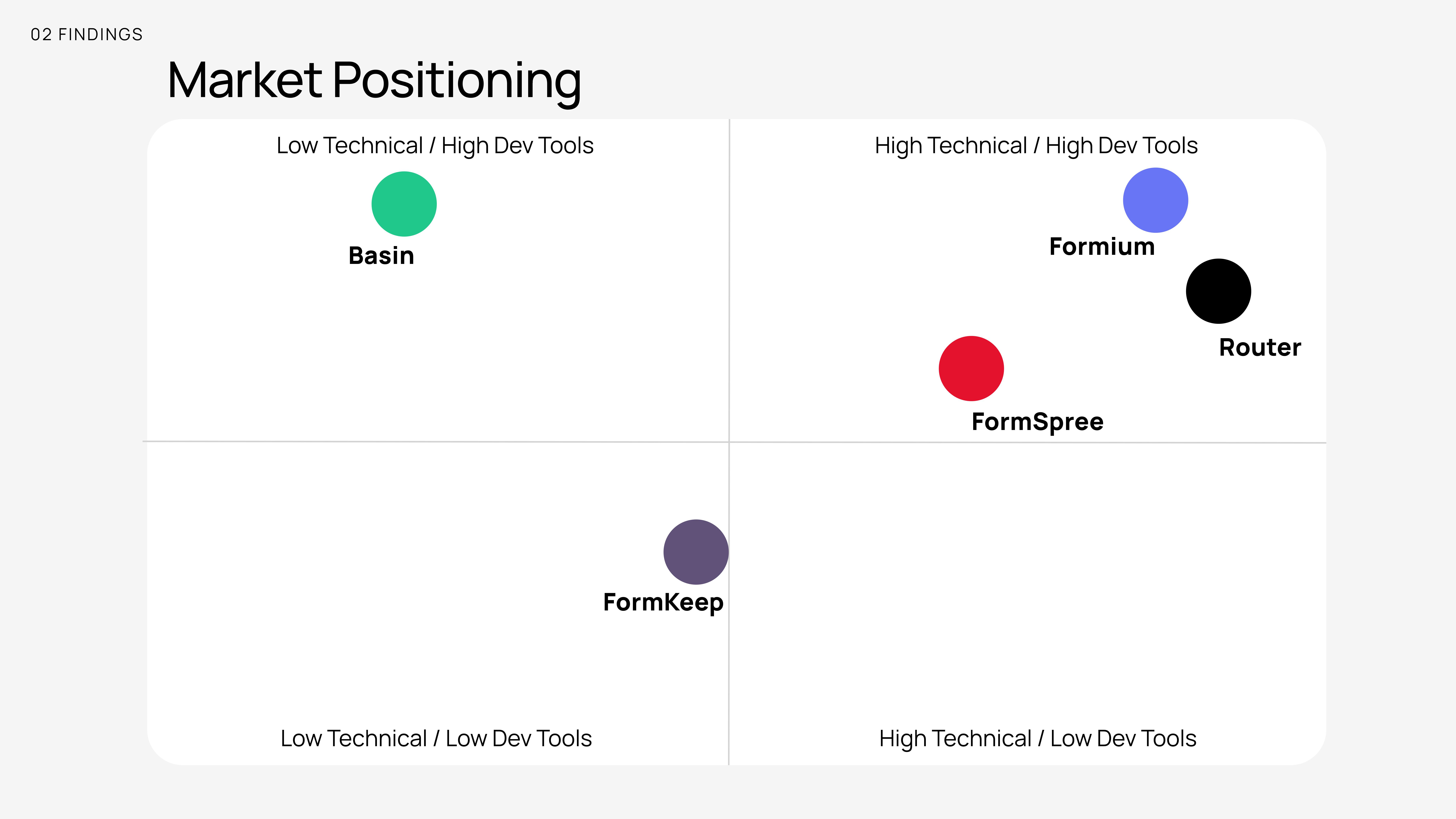
Our competitive analysis positioned Router along two key axes: technical complexity and developer tools focus. This revealed a unique opportunity in the market - while competitors like FormKeep focused on business users and Formium targeted React-specific solutions, Router occupied a distinctive position as a developer-first, technically robust solution that remained framework-agnostic. The analysis showed Router's potential to differentiate itself through its open-source nature and flexible technical capabilities, while highlighting the need to better communicate these advantages to its target audience.
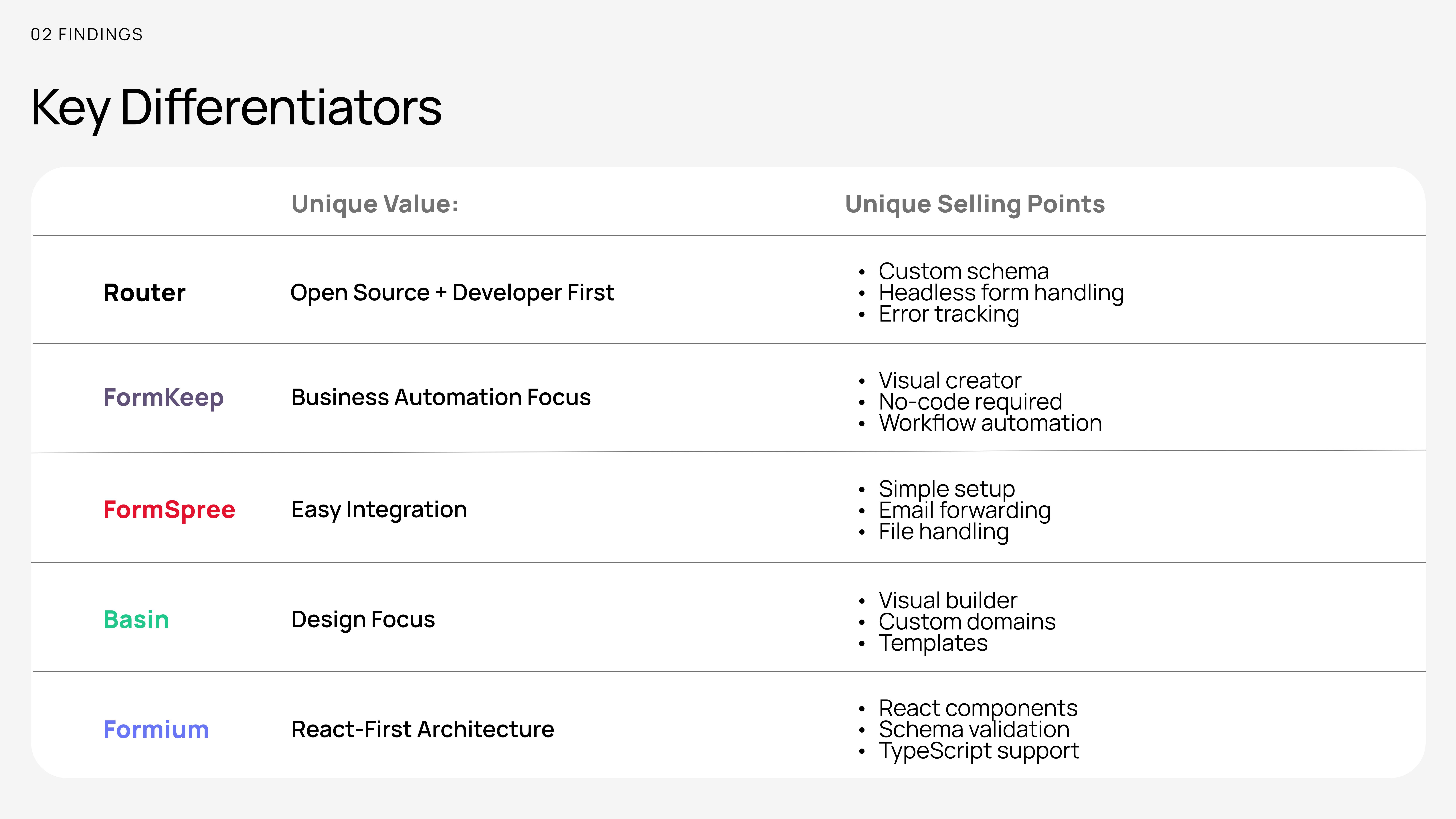
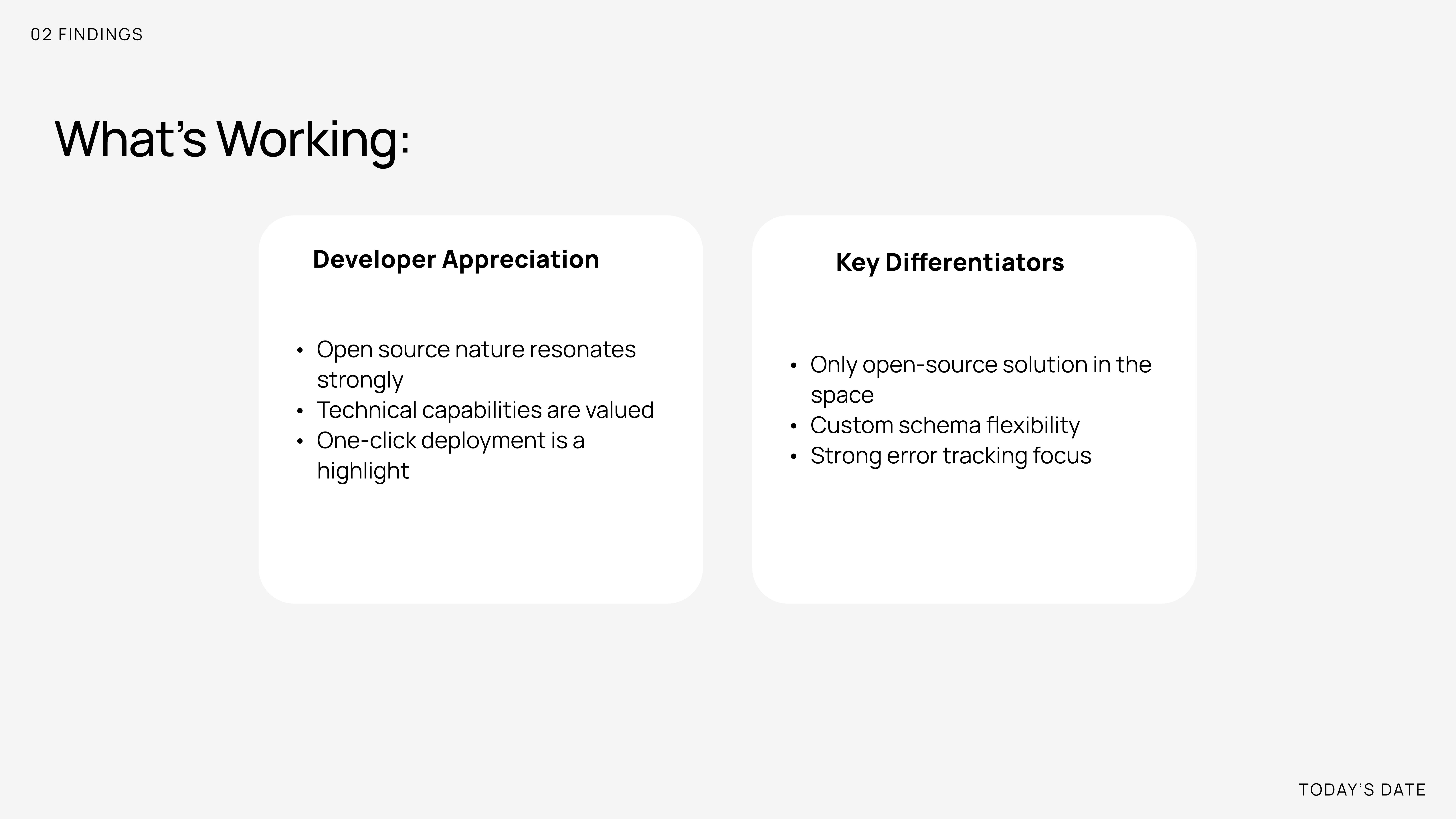

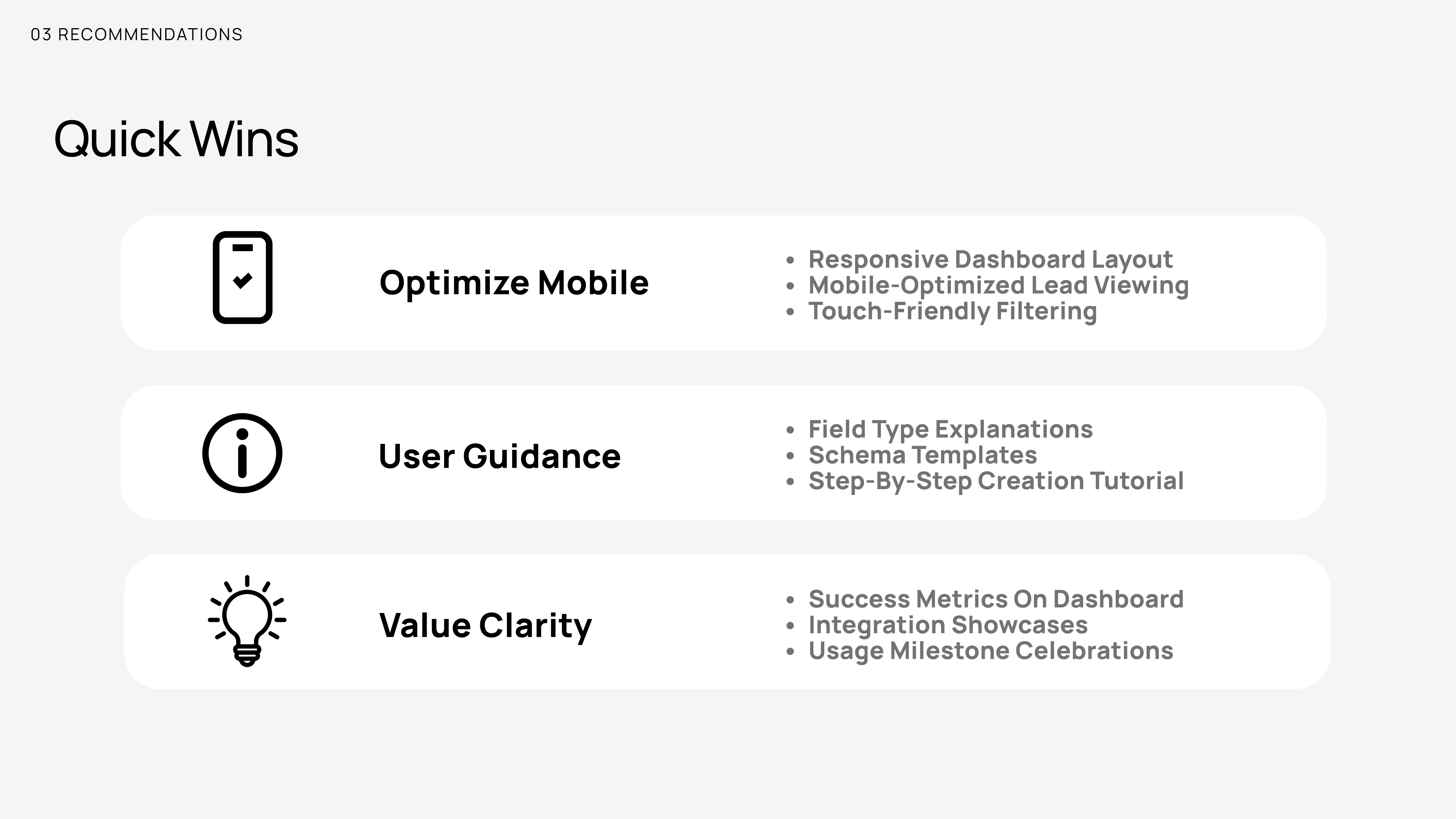
Our research pointed to three high-impact areas that could be addressed within a couple months. First, optimizing the mobile experience for users checking leads and managing their dashboard, addressing a pain point affecting many users. Second, enhancing value clarity throughout the app by strategically placing success metrics and usage milestones where users need validation. Third, implementing better user guidance, particularly during endpoint creation, through field type explanations and schema templates. These quick wins were selected based on their potential for immediate impact and relatively straightforward implementation, aiming to increase user engagement and reduce drop-off rates.
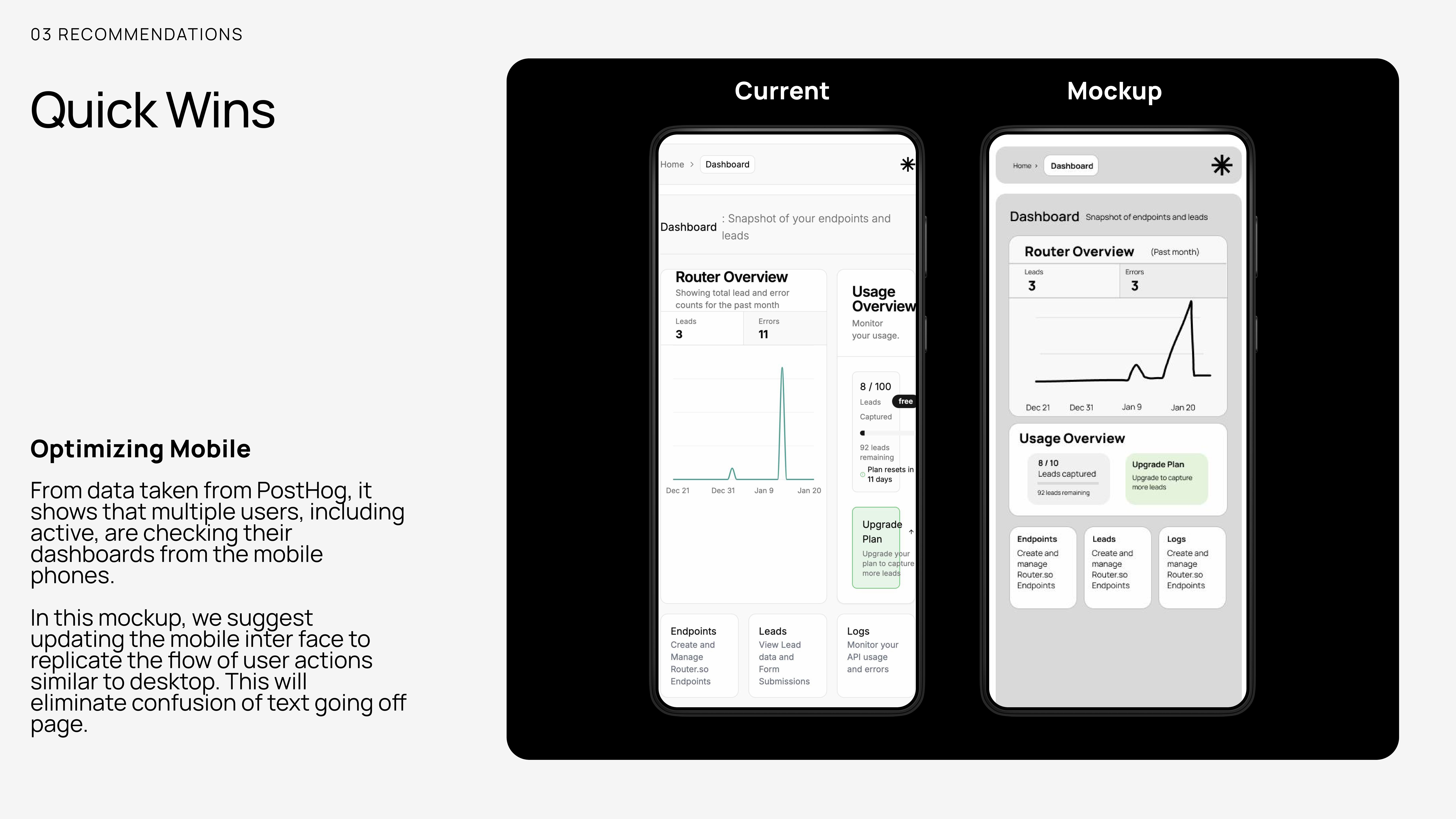

Through our research and competitive analysis, we developed a core message that captured Router's unique value proposition: 'The Open-Source Form Backend and Lead Router That is Developer First.' This positioning directly addresses what makes Router different - combining open-source flexibility with developer-focused functionality. The message emphasizes Router's technical capabilities while clearly stating its purpose as both a form backend and lead routing solution. This refined positioning helps bridge the gap between Router's technical strengths and the need for clearer value communication, speaking directly to its target audience of developers.
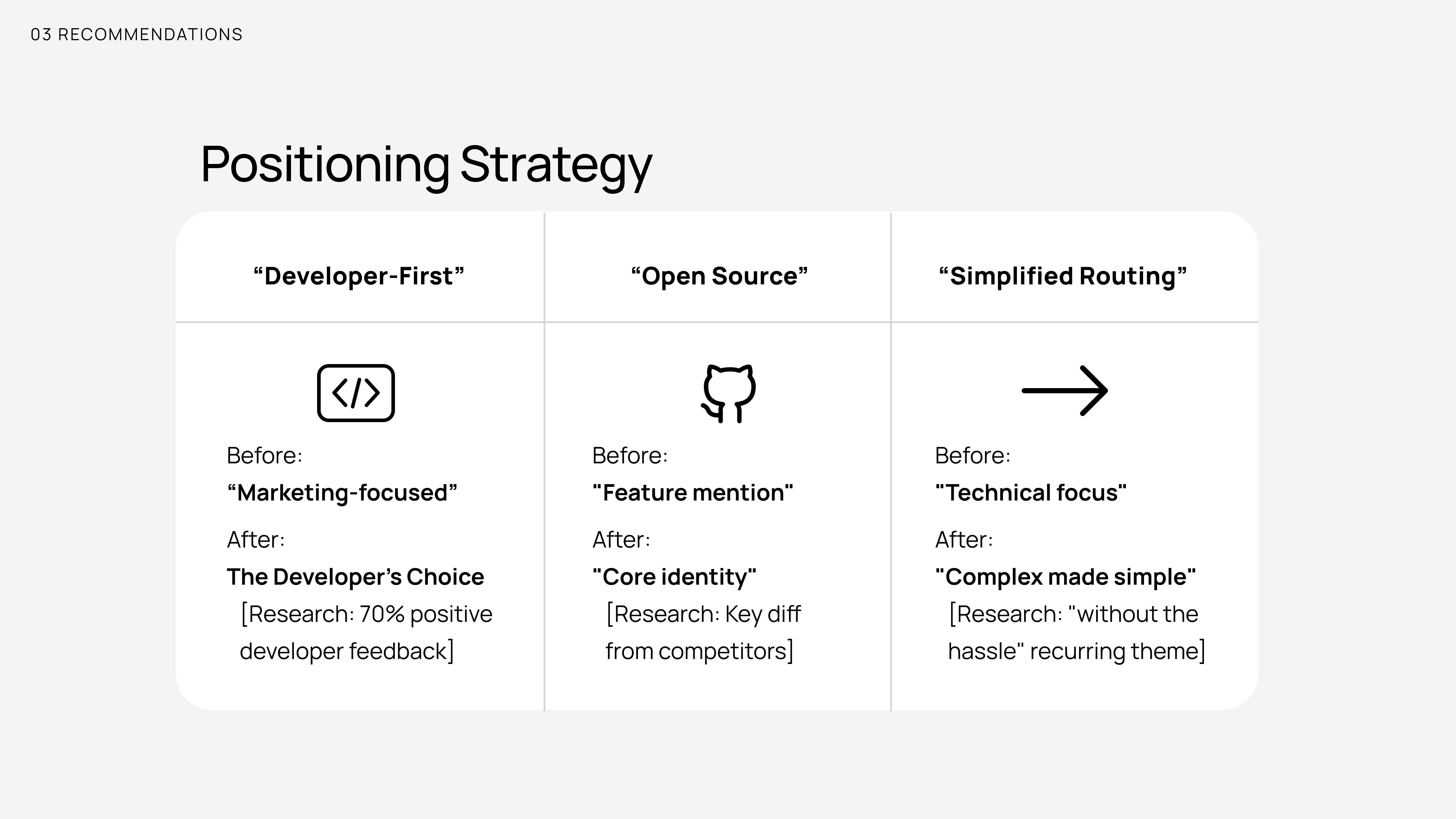
Our positioning strategy realigned Router's messaging across three key dimensions. We shifted from a 'marketing-focused' approach to position Router as 'The Developer's Choice,' supported by strong developer satisfaction in our feedback analysis. The open-source aspect was elevated from a mere feature mention to a core part of Router's identity, directly differentiating it from competitors. Finally, we reframed the technical messaging from complex feature lists to 'Complex made simple,' reflecting the recurring theme in user feedback about appreciating Router's streamlined approach. These shifts maintained Router's technical credibility while making its benefits more immediately clear to its target audience.

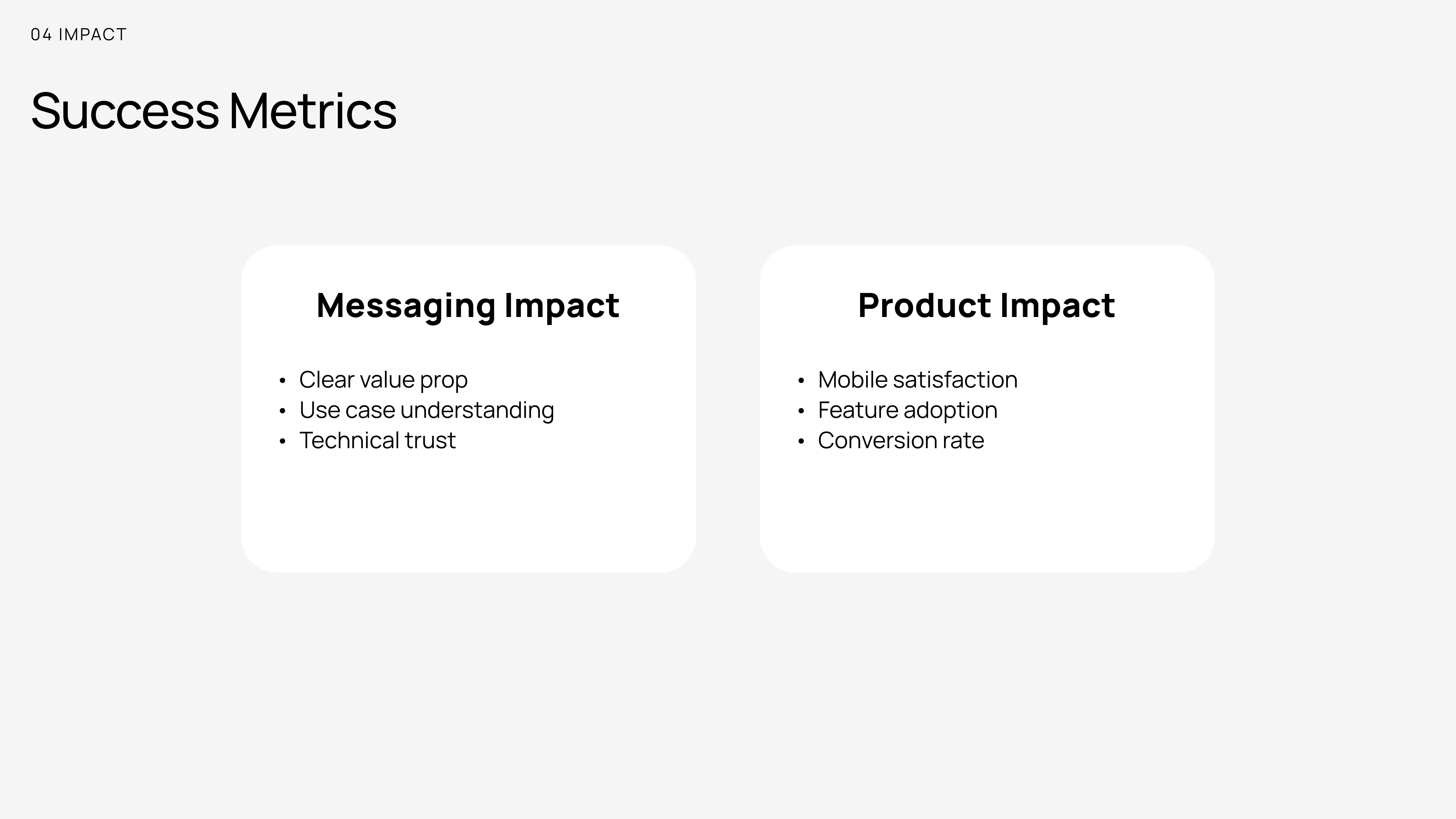
To measure the effectiveness of our recommendations, we established key metrics in two areas. For messaging improvements, we'll track how our refined positioning impacts value proposition clarity, looking for increased understanding of use cases and stronger technical trust from new users. For product enhancements, we'll monitor mobile satisfaction scores, track adoption rates of newly guided features, and measure changes in conversion rates from free to paid plans. These metrics will serve as benchmarks to validate our strategy and guide future improvements, with regular evaluation periods to ensure our recommendations are delivering the intended impact.